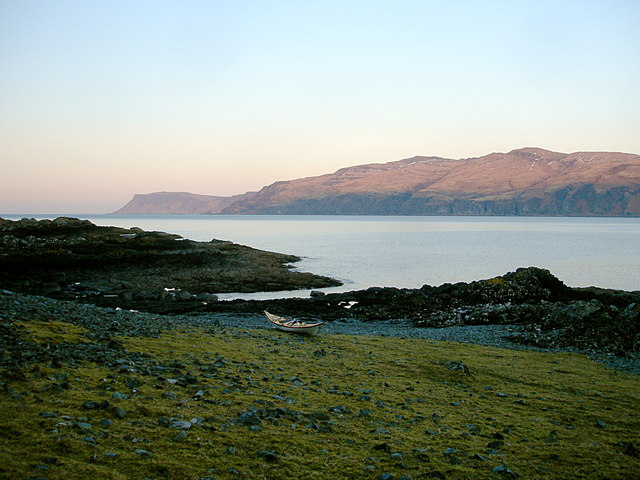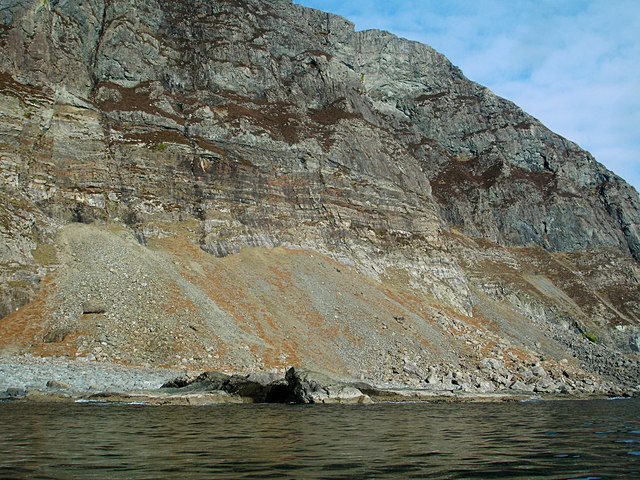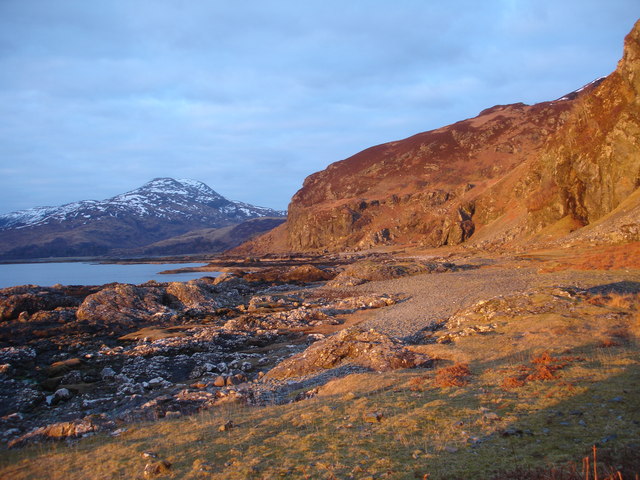Rubha na Faoilinn
Coastal Feature, Headland, Point in Argyllshire
Scotland
Rubha na Faoilinn

Rubha na Faoilinn is a prominent headland located in Argyllshire, Scotland. Situated on the west coast of the country, it juts out into the Atlantic Ocean, offering breathtaking views of the surrounding landscape. The name Rubha na Faoilinn translates to "Point of the Seagulls", which is fitting considering the abundance of these graceful birds that can be seen soaring above the headland.
This coastal feature is characterized by its rugged cliffs and rocky terrain. The headland rises to an impressive height, providing visitors with panoramic vistas of the vast ocean and the nearby islands. The cliffs are adorned with vibrant green vegetation, adding a splash of color to the otherwise stark landscape. The sound of crashing waves against the rocks can be heard, creating a mesmerizing and soothing atmosphere.
Access to Rubha na Faoilinn is available through a well-maintained footpath that winds its way along the coastline. This path offers a leisurely and picturesque walk, allowing visitors to appreciate the natural beauty of the area. Along the route, there are occasional benches and lookout points where one can pause and take in the stunning scenery.
The headland is a popular spot for outdoor enthusiasts, including hikers, birdwatchers, and photographers. It is known for its diverse birdlife, including gannets, fulmars, and, of course, the seagulls after which it is named. Wildlife enthusiasts may also be lucky enough to spot seals lounging on the rocks or dolphins and porpoises swimming offshore.
Overall, Rubha na Faoilinn is a captivating coastal feature that offers a glimpse into the raw beauty of Scotland's western coast. Whether exploring its cliffs, enjoying its panoramic views, or observing the abundant wildlife, visitors are sure to be captivated by the natural wonders found at this headland.
If you have any feedback on the listing, please let us know in the comments section below.
Rubha na Faoilinn Images
Images are sourced within 2km of 56.321437/-5.8848594 or Grid Reference NM5921. Thanks to Geograph Open Source API. All images are credited.










Rubha na Faoilinn is located at Grid Ref: NM5921 (Lat: 56.321437, Lng: -5.8848594)
Unitary Authority: Argyll and Bute
Police Authority: Argyll and West Dunbartonshire
What 3 Words
///workshop.animator.willing. Near Lochbuie, Argyll & Bute
Nearby Locations
Related Wikis
Loch Buie
Loch Buie (Scottish Gaelic: Locha Buidhe, meaning "yellow loch") is a sea loch on the south coast of the Isle of Mull, off the west coast of Scotland....
Moy Castle
Moy Castle is a ruined castle near Lochbuie on the Isle of Mull, Scotland. The site is now a scheduled monument. == History == The land upon which Moy...
Lochbuie, Mull
Lochbuie (Scottish Gaelic: Locha Buidhe, meaning "yellow loch") is a settlement on the Isle of Mull in Scotland about 22 kilometres (14 mi) west of Craignure...
Carsaig Bay
Carsaig Bay is a cove on the Ross of Mull in the south of the Isle of Mull, off the west coast of Scotland. It is situated 5 kilometres (3 miles) eastward...
Nearby Amenities
Located within 500m of 56.321437,-5.8848594Have you been to Rubha na Faoilinn?
Leave your review of Rubha na Faoilinn below (or comments, questions and feedback).



